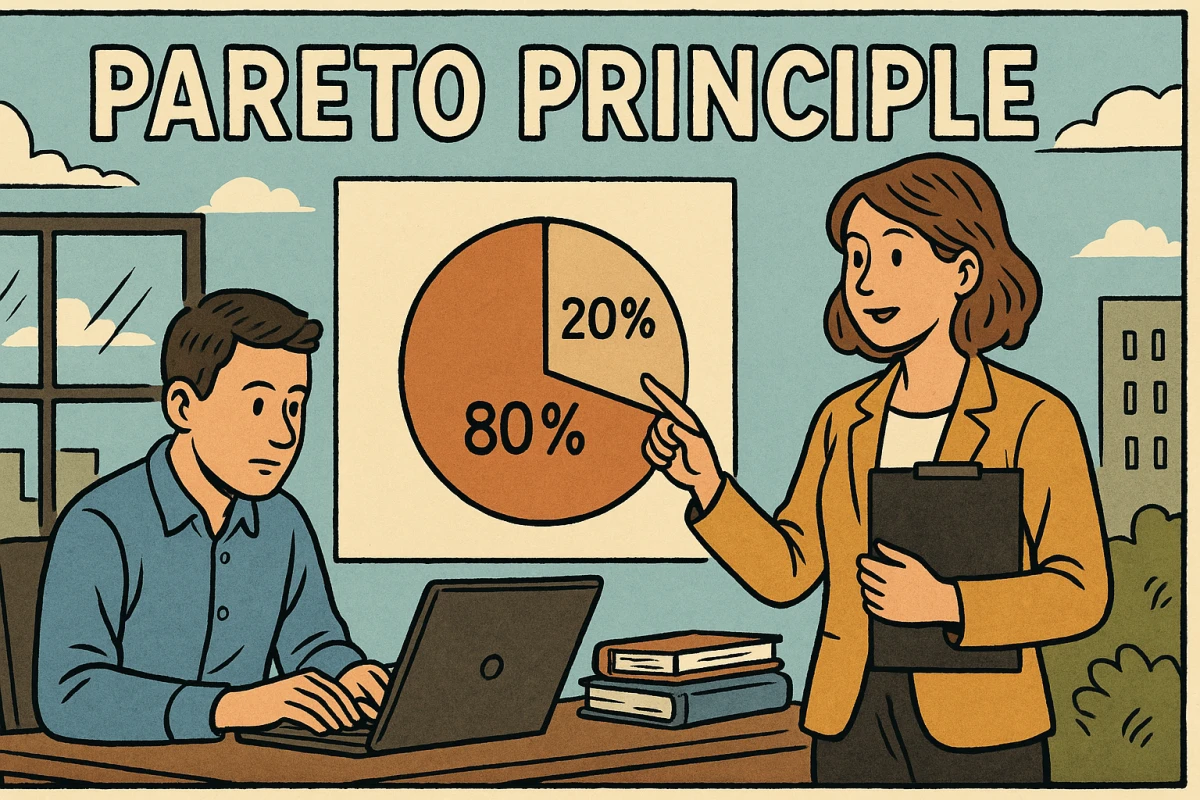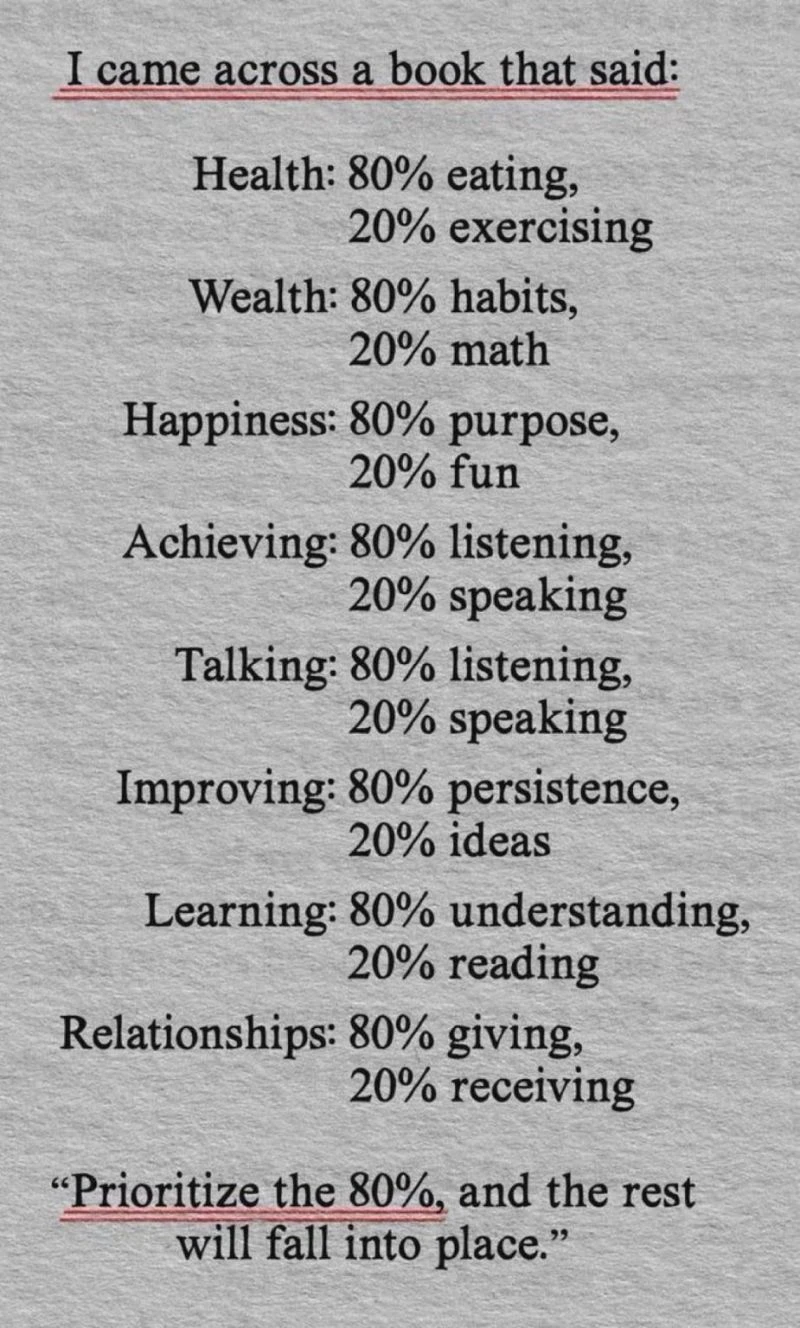The Power of Pareto Principle
Almost everyone knows it: the Pareto principle. If not by name, then usually named as 80:20 rule. I come across this rule often and recognize it primarily in retrospect. Let's have a closer look at the phenomenon to gain a more profound understanding of it.

Classification of the Pareto Principle
So that I can write 80% of the article with 20% of the effort, I start my research with ChatGPT – as funny as the sentence was at first, it is correct in the exact moment. And what does the AI write? First, the AI explains to me what the principle means:
80% of the results are achieved with 20% of the effort. Conversely, the remaining 80% of the effort can often only yield 20% of the result.
Every time I read this definition, I have to let it sink in. There is so much (optimization) potential behind this pattern of thinking for everyday life and work. Before I get into it, I would like to emphasize the limitations:
- It is not an exact mathematical rule. Please don't rely on it, but rather evaluate situations using this pattern of thinking, for example, to derive priorities.
- It cannot be meaningfully applied to every situation. Especially in medical care or security, the complete 100% effort is crucial, and cutting corners or optimizing is fatal.
- If one of your fundamental values is “excellence,” it will be tough for you – believe me, I fight this battle every day. I dive into it here later on.
Relevance to everyday life
Work and productivity
A logical consequence for everyday work is to focus on “high-impact” tasks. That is, 20% of tasks with which I expect to achieve 80% of my results or impact.
The theory sounds simple. From personal experience, I can only point out that one should not confuse action with motion. To apply this principle effectively in everyday work, both long-term and short-term goals must be defined and formulated. Otherwise, I'll be working on the wrong things, and my focus will only lead to me implementing meaningless stuff even more efficiently.
That's why my principle is as follows:
The Pareto Principle is fundamentally an efficiency-enhancing tool (for how I work). For it to achieve its full effect, it must also be used as an efficiency-enhancing tool (which is what I work on).
Household
Let's transition from the professional to the private context: Visualize your home and consider which areas you use most frequently. 20% of the living space (e.g., kitchen, bathroom, living room) is used 80% of the time, and also accounts for 80% of the cleaning effort. So there it is again.
Considering this further, the same principle applies to clothing. At least for me, I wear 20% of my clothes 80% of the time. In my opinion, this isn't a bad thing, but it offers the potential to specifically free myself of ballast → e.g. donate clothes I don't like.
And many more areas
The considerations above can be projected to many areas. I spend the majority of my screen time on the same websites or apps. So, if I want to reduce my screen time (see my book review, “Make Time”), I can start right here by deleting Netflix or blocking Instagram.
When it comes to learning, relationships, or finances, similar applications quickly emerge. I focus my attention on a small circle of people to maintain valuable relationships, rather than maintaining many superficial contacts.

The graphic takes the argument one step further. When I align my life according to the Pareto principle and focus on the essential 80% in each area, habits and systems develop that allow the remaining 20% of life to take care of itself.
Conflict with Excellence
Over time, I've come to realize that I'm defined by three values that guide my decisions, both consciously and often unconsciously: reliability, composure, and excellence. The latter repeatedly causes me difficulties in implementing the Pareto principle: I associate excellence with 100%.
Appropriately, I just read an article on LinkedIn about perfectionism and its various forms. I would classify myself as a combination of rigid and self-critical perfectionism, which influences my actions under the guise of excellence.
To apply the Pareto principle anyway, I use my bullet journal. I reflect on what I have achieved and whether it aligns with my goal, rather than my expectations. A prerequisite for this is a clear definition of goals; without it, I'll be chasing after my expectations. This mechanism helps me to always focus on the essential things.
Do you have the same challenge?
How do you deal with your demands and expectations?
Let's work on it togetherI haven't found a real solution yet. I'm hoping on the saying “Self-awareness is the first step to improvement!”